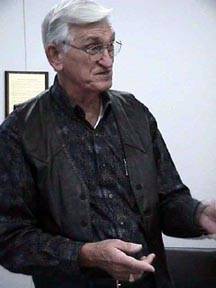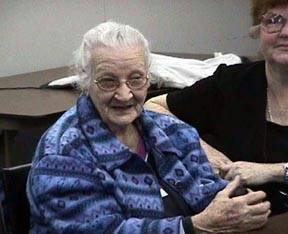

Robert E. Lee Major Cason migrated from around Nacogdoches, Texas, to the Kaufman County area. He married Frances Fannie Kellet, who was from Tennessee, in the mid-1880s. They had four boys and two girls:
John Calvin married Viola Morrison in 1917
James Ben married Deron Houston
Claude C. married Lota Rabe
Roy married Maggie Ivy about 1928
Bell married Luke Johnson
O.B. married Jessie TidwellMajor Cason moved his family from Kaufman County to Rains County where they bought 400 acres of land, and all were living at the southwest edge of Rains County (known as the Flats community) by the 1920s. After several years and during the Depression, the brothers followed the lead of Ben and moved to the Campbell, Hunt County area, leaving their homes and land behind.
The Cason brothers and their families returned to Rains County as tenant farmers, farming on the Bowers farm and the Etter farm. This area became known as Cason Town. Other families lived in the settlement but the name derived from the Cason family who occupied many of the houses on the Bowers farm at the lower end of the area.
The Cason brothers and their families farmed 200 acres in the bottom land where Little Cedar Lake, Big Cedar Lake and the Sabine River met. Cotton grew as high as 5 in this fertile land. However, farming in the bottom lands was risky because an overflow of the lakes and the Sabine River could wash away the crops they had worked long hours to cultivate. If this happened, they would just have to start over with another crop.Living in close proximity and working the tenant farms as one, they were all called from their beds at 3:30 a.m. by the alarm bell that hung at Ben Casons home. By the time the wives had cooked their breakfasts on a wood-burning stove and the men of the homes had fed and cared for the stock, it was light enough to go to the fields. That same bell would call them in from the fields for lunch and if there was an emergency. Once the bell was used to sound the alarm when bales of cotton stacked at the house were burning. After planting, hoeing, picking and ginning cotton that year, the Cason brothers loaded their bales of cotton on the wagons and brought them home, to wait for the prices to go up from the 5c per lb. price. Three of the older Casons sons (James L., Preston, James Robert, aged 4 and 5 years old) set some of the bales on fire and the smoke was seen by some of the women; Lota Cason, who was pregnant, had to climb the pole and sound the alarm by hand due to the urgency of the matter because the cord for the bell was broken. The men dropped their tools and ran towards the house, only to learn of the results of their years work was in danger of burning up on the ground. Because the cotton bales were so tightly packed, they burned slowly and the men were able to salvage some of their crop by doing the only thing they could dig holes and bury the bales that were on fire.
The Casons raised cotton and corn as cash crops on the land and syrup cane for their own use. Granny Cason loved to pick cotton. She could pick 200-300 lbs. a day. While her grandsons carried her sack to be weighed, she would continue picking. When they returned with her cotton sack, she had her apron full, ready to fill her sack again and continue her picking. The last season the family lived on the land, her son Claude told her that she just wasnt going to pick cotton that fall because she would pick cotton all fall and go to the doctor all winter. She looked at him across the dinner table and as big ole tears rolled down her face, she said, You just wont let me have any fun!
The Casons all worked in the fields as one, worked and ate off of a community garden; they even canned their produce and butchered their hogs in an assembly line style some would shuck the corn while others cut it off the cobs and others put it in the tin cans.
There was no electricity in the community and the ice man would come around with ice. Mr. Trimble peddled for Basil Rabb in Point and would come through Cason Town with his wares, often taking chickens and eggs for his wares instead of cash. Square dancing was the entertainment. Oftentimes friends and neighbors would show up at one of the homes; theyd just move all the furniture back and spend the night in music and dancing. The local swimming hole was near Wesley Plummers place. He plowed with horses and one of the horses he called Silver. Once the Cason boys heard Mr. Plummer as he worked hard in a field near where they were enjoying a summer swim, Flip, Silver! If youre going to die, just fall down and Ill take the harness off!
The Oak Grove Church of Christ was the only house of worship in the area. Some of the families who attended were Carter, McWaters, Zora & Ray Shepherd, Jesse & Homer Hayden. The congregation would string lights (lanterns) outside during the summers in order to conduct revival services. About 1953 the church site was moved and a church building rebuilt on FM47 at what is now the water tank at the entrance of Sabine River Authority. Later the church was abandoned and the congregation attended church services at Point Church of Christ.
In 1948 when the bottom dropped out of the cotton market, the Cason families left Cason Town. Mr. Bowers had sold the land earlier to Arlie Hurst, who owned a Chevrolet dealership in Lone Oak. Mr. Hurst offered to sell the 700 acres to Claude Cason for $12,500. Mr. Cason refused on account of his not thinking he could possibly make the payments on such a large loan. To persuade Claude to reconsider, Mr. Hurst offered to take the payments in the 1/3s and ¼s tenant payments that the Cason brothers had been making the many years before. Again, Claude refused the offer. Charlie Calloway bought the land from Mr. Hurst. Instead of cotton and corn, he planted soybeans on the land and made a bonanza crop.
Work on Lake Tawakoni started about 1955 and the Lake was opened about 1960, consequently flooding the area once commonly known and referred to as Cason Town. About 1998, the water level of Lake Tawakoni sank so during a summer drought that Cason family members and friends were able to visit the site of the former Cason Town; there they found the planks still in place of a wooden bridge and the concrete foundation of Maggie and Roys hen house. Remnants of the furnishings of the Oak Grove Church were lying on the ground that now is the lake bottom of Lake Tawakoni.
| In 2003 Maggie Ivy Cason, 91 years old, is the only surviving member of the brothers and their wives who resided in Cason Town, now underwater and gone except in the memories and hearts of the younger generations of the family. |  |